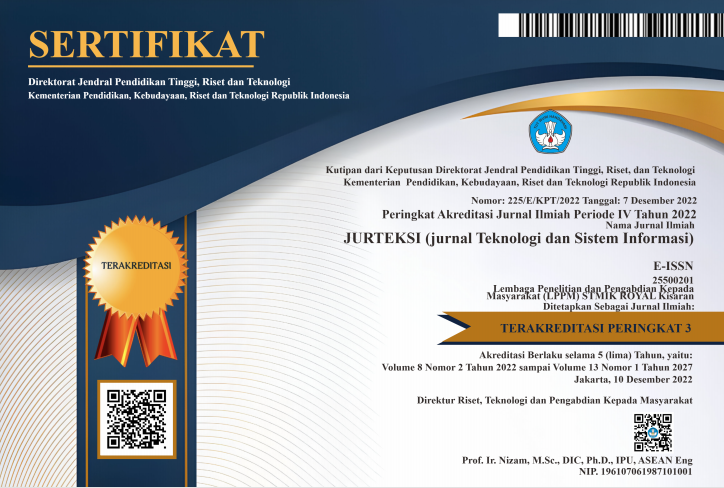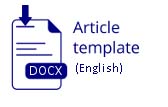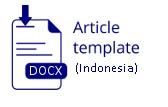FEATURE ALIGNMENT OF THE INTERNAL QUALITY AUDIT SYSTEM BASED ON PPEPP
Abstract
Abstract: The Ministry of Education, Culture, Research, and Technology, has developed guidelines for the Internal Quality Assurance System or known as SPMI, that is being implemented through the Internal Quality Audit (IQA) with the PPEPP cycle, namely Determination (P), Implemen-tation (P), Evaluation (E), Control (P), and Improvement (P). Some universities have implemented IQA with system. The problem is that the system does not line well with the PPEPP cycle, which results in unsatisfactory audit results. The purpose of this study is to evaluate how well the university-owned AQI system features in line the PPEPP cycle and to highlight development opportunities. The method used Feature Oriented Domain analysis (FODA) and Acceptance Testing. This study delivered an analysis of IQA system features that consistent with PPEPP. The FODA results were validated by expert and tested with User Acceptance Test (UAT) with 89.98% user response that the system is acceptable. The research contributes to universities' understanding of the features necessary in the AQI system, which has an impact on the perfection of the university AQI system design in accordance with the PPEPP cycle.
Keywords: FODA; IQA system; PPEPP cycle; SPMI
Abstrak: Kementerian Pendidikan, Kebudayaan, Riset, dan Teknologi telah menyusun pedoman Sistem Penjaminan Mutu Internal atau yang dikenal dengan SPMI, yang diimplementasikan melalui Audit Mutu Internal (AMI) dengan siklus PPEPP, yaitu Penetapan (P), Pelaksanaan (P), Evaluasi (E), Pengendalian (P), dan Peningkatan (P). Beberapa perguruan tinggi telah mengimplementasikan AMI dengan sistem. Permasalahannya, sistem tersebut tidak sejalan dengan siklus PPEPP, sehingga hasil audit kurang memuaskan. Tujuan dari penelitian ini adalah untuk mengevaluasi seberapa baik fitur sistem AMI milik perguruan tinggi sejalan dengan siklus PPEPP dan menyoroti peluang pengembangan. Metode yang digunakan adalah analisis Feature Oriented Domain (FODA) dan Acceptance Testing. Penelitian ini menghasilkan analisis fitur sistem AMI yang konsisten dengan PPEPP. Hasil FODA divalidasi oleh ahli dan diuji dengan User Acceptance Test (UAT) dengan 89,98% respon pengguna bahwa sistem dapat diterima. Penelitian ini memberikan kontribusi terhadap pemahaman universitas terhadap fitur-fitur yang diperlukan dalam sistem AMI, yang berdampak pada kesempurnaan desain sistem AMI universitas sesuai dengan siklus PPEPP.
Kata kunci: FODA; siklus PPEPP; sistem AMI; SPMI
References
L. Volante, D. A. Klinger, and C. DeLuca, “The rise and stall of standards-based reform,” Phi Delta Kappan, vol. 106, no. 2, pp. 42–46, 2024, doi: 10.1177/00317217241287985.
A. Khtere, “Performance appraisal of faculty members based on internal quality assurance system: A delphi study,” Int. J. High. Educ., vol. 9, no. 6, pp. 87–95, 2020, doi: 10.5430/ijhe.v9n6p87.
Direktorat Pembelajaran dan Kemahasiswaan, Pedoman Implementasi Sistem Penjaminan Mutu Internal (SPMI) Bagi Perguruan Tinggi Penyelenggara Pendidikan Akademik. Jakarta, 2024.
A. . Atanda and A. Adeniran, “the Academic Quality Assurance in the Colleges of Education in Nigeria,” Int. J. Adv. Acad. Res., vol. 6, no. 4, pp. 37–51, 2020, doi: 10.46654/ij.24889849.a6426.
N. T. T. Pham, C. H. Nguyen, H. T. Pham, and H. T. T. Ta, “Internal Quality Assurance of Academic Programs: A Case Study in Vietnamese Higher Education,” SAGE Open, vol. 12, no. 4, pp. 1–11, 2022, doi: 10.1177/21582440221144419.
E. F. Kufi, “Quality audit in Education,” J. Qual. Educ., vol. 12, no. 20, pp. 69–82, 2022, doi: 10.37870/joqie.v12i20.327.
N. Carvalho, M. J. Rosa, and A. Amaral, “Cross-Border Higher Education and Quality Assurance. Results from a Systematic Literature Review,” J. Stud. Int. Educ., vol. 27, no. 5, pp. 695–718, 2023, doi: 10.1177/10283153221076900.
I. Mustika K, R. Rohmad, A. Hasan, and N. A. Setyaningrum, “Implementation of Continuous Improvement (CI) in the Management of KKNI UIN Saizu Purwokerto Curriculum through the PPEPP Model,” Int. J. Soc. Sci. Hum. Res., vol. 7, no. 08, pp. 6198–6208, 2024, doi: 10.47191/ijsshr/v7-i08-47.
I. Sabban and I. H. A. Rahman, “Quality assurance and its impact from higher education institutions’ perspectives: Sequential Explanatory Strategies for Alumni,” Rec. Libr. J., vol. 8, no. 2, pp. 309–318, 2022, doi: 10.20473/rlj.V8-I2.2022.309-318.
A. S. Kang, Kyo C; Cohen, Sholom G.; Hess, James A.; Novak, William E.; Peterson, Feature-Oriented Domain Analysis (FODA) Feasibility Study, no. November. 1990.
G. W. Wicaksono, G. A. Juliani, E. D. Wahyuni, Y. M. Cholily, H. W. Asrini, and Budiono, “Analysis of Learning Management System Features based on Indonesian Higher Education National Standards using the Feature-Oriented Domain Analysis,” in 2020 8th International Conference on Information and Communication Technology, ICoICT 2020, 2020, p. 6, doi: 10.1109/ICoICT49345.2020.9166459.
G. W. Wicaksono, A. Saleh, E. D. Wahyuni, and E. B. Setiawan, “Analysis of the Alignment of Bauran System Features Based on Outcome-based Education Rules Using Feature-oriented Domain Analysis,” Int. J. Informatics Vis., vol. 8, no. 3–2, pp. 1966–1975, 2024, doi: 10.62527/joiv.8.3-2.2895.
F. M. B. Boaventura and V. T. Sarinho, “A Feature-Based Approach to Develop Digital Board Games,” in First IFIP TC 14 Joint International Conference, ICEC-JCSG 2019 Arequipa, Peru, November 11–15, 2019 Proceedings, 2019, vol. 11863 LNCS, pp. 175–186, doi: 10.1007/978-3-030-34644-7_14.
M. Lettner, J. Rodas, J. A. Galindo, and D. Benavides, “Automated analysis of two-layered feature models with feature attributes,” J. Comput. Lang., vol. 51, no. November 2018, pp. 154–172, 2019, doi: 10.1016/j.cola.2019.01.005.
S. Gordon et al., “Best Practice Recommendations: User Acceptance Testing for Systems Designed to Collect Clinical Outcome Assessment Data Electronically,” Ther. Innov. Regul. Sci., vol. 56, no. 3, pp. 442–453, 2022, doi: 10.1007/s43441-021-00363-z.
N. Elangovan and E. Sundaravel, “Method of preparing a document for survey instrument validation by experts,” MethodsX, vol. 8, no. 101326, p. 9, 2021, doi: 10.1016/j.mex.2021.101326.













